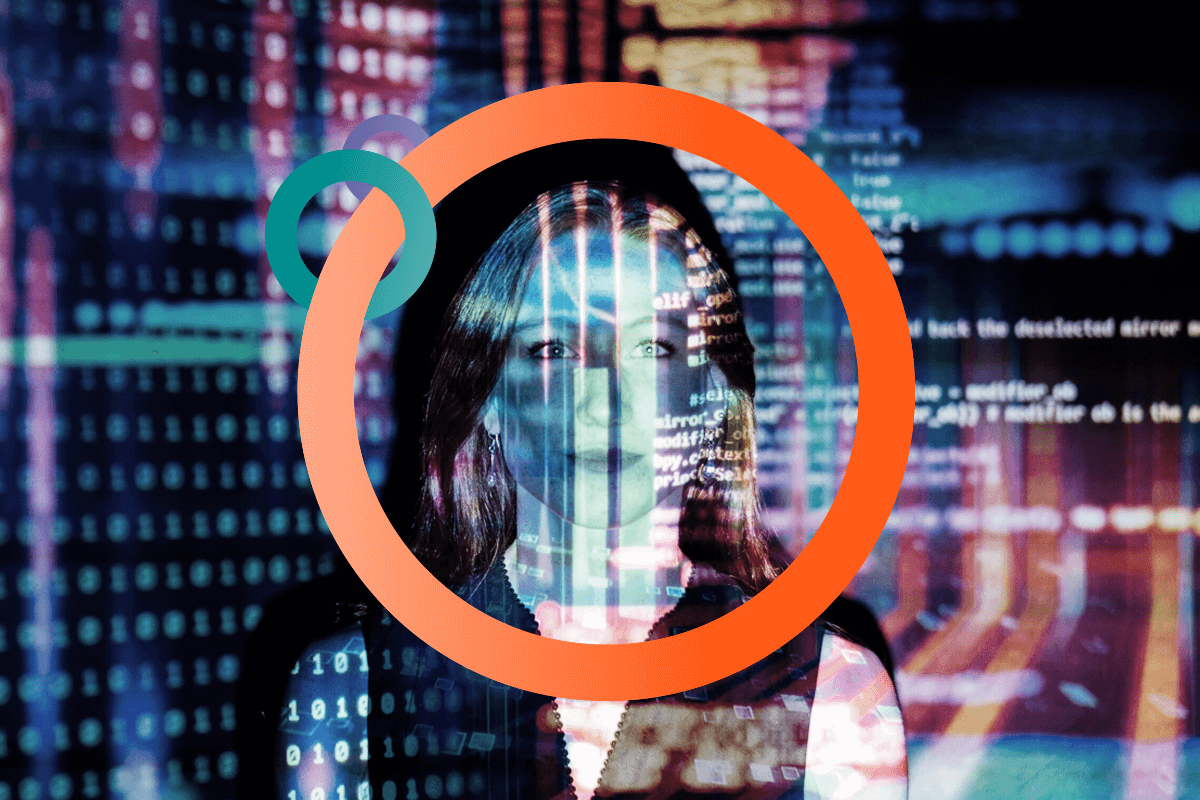In the world of digital assistants, RPA used to reign supreme, revolutionizing routine tasks and boosting productivity. But now, there’s a new contender in town: Generative AI. With the potential to add trillions of dollars in value to the global economy, Generative AI is making waves with its ability to automate cognitive work and narrow the skills gap. In this blog, we’ll explore the real-world impact of Generative AI and how it can transform your business operations.
The New Kid on the Block
Until recently, Robotic Process Automation (RPA) was the best digital assistant around. RPA robots, often with human-sounding names, would instantly execute those pesky routine tasks that otherwise took mere humans many minutes to complete. For example, George would update your ERP system automatically – so your human worker no longer had to spend time logging in, re-keying data, and pressing “save”. The magic of RPA boosted productivity, allowed real people (sorry, George) to spend less time on humdrum tasks, and made human work more satisfying.
Well, now there’s a new digital assistant in town. Generative AI. Think of it as RPA Redux, but with even greater potential to help.
In its recently published study “The economic potential of generative AI: The next productivity frontier”, McKinsey suggests that Generative AI’s impact on productivity “could add trillions of dollars in value” to the global economy. The firm’s latest research estimates annual benefits exceeding the entire 2021 GDP of the UK.
McKinsey cites a range of use case examples to make the message hit home:
“… at one company with 5,000 customer service agents, the application of generative AI increased issue resolution by 14 percent an hour and reduced the time spent handling an issue by 9 percent. It also reduced agent attrition and requests to speak to a manager by 25 percent. Crucially, productivity and quality of service improved most among less-experienced agents …”
“One European bank has leveraged generative AI to develop an environmental, social, and governance (ESG) virtual expert by synthesizing and extracting from long documents with unstructured information. The model answers complex questions based on a prompt, identifying the source of each answer and extracting information from pictures and tables.”
“Morgan Stanley is building an AI assistant using GPT-4, with the aim of helping tens of thousands of wealth managers quickly find and synthesize answers from a massive internal knowledge base.”
Equally striking, and perhaps more significant, is the speed with which Generative AI is being adopted. In its “Why Consumers Love Generative AI” report, Capgemini Research Institute notes that:
“Unlike the earlier tech trends, including the internet, mobile, and social media, first-wave generative AI is being used by consumers across all age groups.”
“51% of consumers are aware of the latest trends in the generative AI space and have also explored Generative AI tools”
“89% satisfaction with chatbots that use Generative AI”
“74% satisfaction with text summarization or translation by Generative AI”
“67% believe they could benefit from receiving medical advice from Generative AI”
To borrow language from industry analyst Gartner, we are ascending the “steep slope of inflated expectations” and need to assess what’s real vs hype in the Generative AI revolution. So, how can you capture some of the economic value that McKinsey and others confidently predict?
Generative AI Adds Cognitive Ability
While debates continue about whether AI is actually “thinking” or just cleverly regurgitating previously generated human content, it’s already clear that Generative AI can help humans get work done faster.
Take a straightforward example that impacts workers in many companies – how much time is spent understanding the content of documents? When you open a bank account, take on a new mortgage loan, make an insurance claim, or initiate some other document-intensive process – how much time is spent by employees and customers understanding the documents that pass back and forth? Lots, right?
As your new digital assistant, Generative AI is ready to help. It can generate in milliseconds a summary of a document, saving many minutes of human time otherwise required to read, understand, and distil the document content.
Indeed, the Generative AI digital Assistant can go further and answer more complicated questions. For example, if you feed the tax code to your Generative AI and give it some of your financial details, it will answer the question “calculate my tax liability”. It’ll even tell you how it arrived at the answer, so you can trust it!
Watch Doug Brockman, President and Co-Founder of OpenAI, as he demonstrates this live, starting at 19:48 in this YouTube video launching GPT-4 in March 2023. I love how Doug says, “the tool [Generative AI] is not perfect, but neither are you … together this amplifying tool just lets you reach new heights”. That’s the positive message of AI’s promise in general.
If RPA increased productivity by executing basic actions on behalf of people, Generative AI promises much greater benefits by automating human cognitive work. Think about it. This is a type of work that we’d previously thought of as characteristically, even exclusively, human. The potential business value of automating some of this typically human activity is monumental.
Generative AI Narrows the Skills Gap
The short supply of human workers hinders the growth of individual businesses and entire economies. Generative AI mitigates these risks by narrowing the skills gap, unleashing economic potential by adding “human-like” capabilities previously not available through automation.
Let’s illustrate this impact by looking at an example based in the technology sector.
Tech sector companies and their advocates regularly shout about the need for more skilled graduates, as well as the retraining of people from other sectors. According to these parties, there simply aren’t enough skilled software engineers, also known as “developers”.
Well, without a hint of irony, Generative AI itself is addressing this problem with its new type of automation.
In collaboration with GitHub, a collaboration and productivity tool widely used by software engineers, OpenAI has created a digital assistant that helps developers by providing contextual code suggestions and auto-completion while they write code.
It’s called Copilot. Think of it like the auto-complete on your smartphone, but smarter.
Estimates vary on the percentage gain in programmer productivity, but the bottom-line impact is clear. An increased volume of computer code is delivered while the number of human software engineers remains the same. And perhaps most usefully, Copilot helps novices quickly write high-quality code without the traditional human learning pattern of try, fail, correct, try again, repeat.
Copilot was trained on a vast amount of publicly available software code, allowing it to generate suggestions based on successful patterns and millions of code snippets. In effect, it embodies the best practice of all software engineers whose code is publicly available.
Furthermore, it accelerates the coding process, reduces repetitive tasks, and helps any developer write better code more efficiently. It even helps novices quickly write high-quality code, by bringing to bear, in the moment and in context, a greater store of experience than any single teacher could.
But why stop at the software engineers and developers? Generative AI can boost the productivity of the vast population of people like you and me who USE software.
That’s what Microsoft has done with the March 2023 launch of Microsoft 365 Copilot. It’s a copilot for work, closing the skills gap for everyone who uses Word, Excel, PowerPoint and other applications.
Who is Winning the Generative AI Race?
Amazon Web Services (AWS) is just one of the major tech sector companies investing big in Generative AI. They join Microsoft, Google, and a myriad of other players in a race to bring the benefits of AI to us all.
As AWS CEO, Adam Selipsky, comments we are “three steps into a 10k race” and it’s foolish to pick winners at such an early stage. Indeed, Selipsky calls it “preposterous” to think that one winner will emerge. What’s important right now is for people to have the means for “experimentation”, so they can try different types of AI and discover which is best for which purpose.
To that end, AWS and others, including Ondox, are working to democratize AI. This will ensure that all businesses can embed AI at the appropriate points in their day-to-day operation, doing so in a secure way that ensures data privacy.
Getting Started…Safely
Ondox helps businesses automate cognitive work in document-intensive business operations. We have deep experience in AI application for document understanding, and we prioritize enterprise security and data privacy.
Customers ask us:
- How do I keep my information safe as it travels outside my organization to an AI engine in the cloud?
- How confident can I be of the results AI delivers?
- Will my information be used as training data by the AI tool?
- How do I ensure my team structures a question when they “Ask AI” so I can ensure they receive a useful answer?
- How can I make that answer usable within my business?
Ondox exploits AI to add simplicity and speed to digital mailroom solutions, while providing the security and scalability enterprises require.
If you want to take advantage of Generative AI as a new digital assistant that increases efficiency and closes the skill gaps in your organization, contact us. We look forward to speaking with you.







